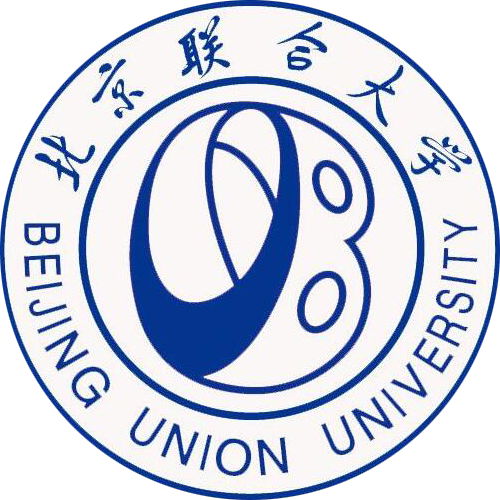详细信息
东亚钳蝎提取物醇提部位对佐剂性关节炎大鼠免疫功能的调节
Modulation of immunological function of rats with adjuvant arthritis by using alcohol-extract of Buthus martensii Karsch
文献类型:期刊文献
中文题名:东亚钳蝎提取物醇提部位对佐剂性关节炎大鼠免疫功能的调节
英文题名:Modulation of immunological function of rats with adjuvant arthritis by using alcohol-extract of Buthus martensii Karsch
作者:黄迎春[1];顾立刚[2]
第一作者:黄迎春
机构:[1]北京联合大学生物化工学院;[2]北京中医药大学基础医学院
第一机构:北京联合大学生物化学工程学院
年份:2006
卷号:10
期号:39
起止页码:98-100
中文期刊名:中国临床康复
外文期刊名:Chinese Journal of Clinical Rehabilitation
收录:北大核心:【北大核心2004】;CSCD:【CSCD_E2011_2012】;
语种:中文
中文关键词:钳蝎科;关节炎;佐剂性;免疫性
摘要:目的:观察东亚钳蝎提取物的醇提部位对佐剂性关节炎模型大鼠的抗炎作用和免疫调解功能,并与有确切治疗类风湿关节炎效果的雷公藤作用结果进行比较。方法:①实验于2006-01/2006-04在北京联合大学生物化学工程学院生物医药系实验室完成,采用大鼠佐剂性关节炎足肿胀实验。②选用Wistar大鼠60只,随机分为6组,即正常对照组,模型组,雷公藤(20mg/kg)组,东亚钳蝎提取物的醇提部位低、中、高剂量组,每组10只。模型组用完全福氏佐剂于大鼠右后肢足跖皮内注射0.1mL,正常对照组注射等体积生理盐水。③致炎后第18天大鼠右后足局部关节明显红肿显著,发生继发性病变时,雷公藤组、东亚钳蝎提取物的醇提部位低、中、高剂量组分别按20,31,62,124mg/kg开始灌胃给药治疗,0.3mL/只。东亚钳蝎提取物的醇提部位为将去除尾部毒腺的东亚钳蝎在液氮中研磨碎,然后加入100g/L的无菌葡萄糖溶液,摇匀,取上清液冷冻干燥,然后再用乙醇进行提取获得;雷公藤多甙片(湖南省株洲市制药三厂产品,产生批号:20030703,10mg/片)。对照组、模型组灌胃等体积蒸馏水;给药1次/d。④在给药2,12,15,21d后测大鼠左后肢足跖的直径。末次给药24h后,计算胸腺指数[胸腺重量(mg)/体质量(g)]。⑤组间比较采用t检验。结果:大鼠60只全部进入结果分析。①大鼠左后肢足跖直径:给药前,各组相近(P>0.05)。给药2d后,模型组明显高于正常对照组(t=11.26,P<0.01),雷公藤组和东亚钳蝎提取物的醇提部位中剂量组明显低于模型组(t=2.14,3.44,P<0.05,0.01)。给药12和21d后,模型组明显高于正常对照组(t=8.54,12.07,P<0.01),雷公藤组和东亚钳蝎提取物的醇提部位中、高剂量组明显低于模型组(t=2.23~5.27,P<0.05~0.01)。给药15d后,模型组明显高于正常对照组(t=9.37,P<0.01),东亚钳蝎提取物的醇提部位中剂量组明显低于模型组(t=3.34,P<0.01)。②大鼠胸腺指数:模型组为(0.867±0.083)mg/g,低于正常对照组[(1.109±0.239)mg/g,t=3.02,P<0.01],东亚钳蝎提取物的醇提部位小、中、大剂量组分别为(1.609±0.167),(1.472±0.186),(0.991±0.121)mg/g,高于模型组(t=12.58,9.39,2.67,P<0.01),雷公藤组为(0.925±0.166)mg/g,与模型组相近(P>0.05)。结论:中剂量东亚钳蝎提取物的醇提部位抗炎效果最佳,优于雷公藤;各剂量东亚钳蝎提取物的醇提部位免疫增强作用强于雷公藤。
AIM: To investigate the anti-inflammation effect and immunological modulation of the extract of Buthus martensii Karsch with alcohol (BmKEA) on adjuvant arthritis (AA) rats, and compare with the effect of Leigongteng in the treatment of rheumatoid arthritis. METHODS: ①The experiment was performed in the Laboratory of Biomedicine Department, Biochemical Engineering College of Beijing Union University from January to April in 2006. The rat paw swelling test of AA rats was used. ②Totally 60 Wistar rats were selected and randomly assigned into 6 groups, namely normal control group, model group, Leigongteng group (20 mg/kg) group, BmKEA groups of low, medium and high dose (31 mg/kg, 62 mg/kg and 124 mg/kg). There were 10 rats in each group. Each rat of model group was treated with 0.1 mL Freund's complete adjuvant in the right back ankle by hypodermic injection. Each rat of normal group was injected with saline of the same volume by the same way. ③The local joint of right back feet became significantly red swollen and producod the secondary affection on the 18^th day after inducing inflammation. The adjuvant-induced rats were treated with 0.3 mL of medicine (Leigongteng and BmKEA) by gastric perfusion. Leigongteng was the product of Hunan Province Zhuzhou Third Pharmaceutical Factory with the lot number of 20030703, each tablet containing 10 mg. BmK was grinded in liquid nitrogen after excising venom gland in tails, and then mixed with 100 g/L sterile glucose solution, followed by freeze-drying by supernatant and alcohol extraction. The normal control group and model group were drenched with distilled water of the same volume, once a day. ④The diameters of the left back ankle were measured at different time points (the 2^nd, 12^th, 15^th and 21^st days after treatment). The thymus indexes [thymus weight (mg)/body mass (g)] of all rats were measured after 24 hours of last administration. ⑤The statistical analysis between groups was conducted by t test. RESULTS: Totally 60 rats were all involved in the result analysis.①The arthral thickness of the left back was not obviously different before injecting adjuvant (P 〉 0.05). Two and fifteen days after administration, the diameter of left baek ankle was obviously higher in model group than in normat control group (t=11.26. 9.37. P 0.01), and significantly lower in Leigongteng group and BmKEA group of medium dose than in model group (t=2.14, 3.44, P 〈 0.05, 0.01). After 12 and 21 days of administration, the ankles of model rats were more swelling than those of normal control group (t=8.54, 12.07, P 〈 0.01). After treatment, the rat arthral tumefaction of BmKEA groups of medium and high doses and Leigongteng group was markedly decreasod (t=2.23-5.27, P 〈 0.05-0.01).②The thymus indexes was lower in model group than in normal control group [(0.867±0.083) mg/g, (1.109±0.239) mg/g. t=3.02, P 〈 0.01], and BmKEA groups of different doses were increased significantly after treatment [(1.609±0.167), (1.472±0.186), (0.991±0.121) mg/g, t=12.58, 9.39, 2.67, P 〈 0.01]. While Leigongteng group showed the similarity as model group [(0.925±0.166) mg/g, P 〉 0.05].
CONCLUSION: Compared with Leigongteng. BmKEA at medium dose can distinctly control the development of iaflammtion: BmKEA also can improve immunological function of AA rats.
参考文献:
![]() 正在载入数据...
正在载入数据...


